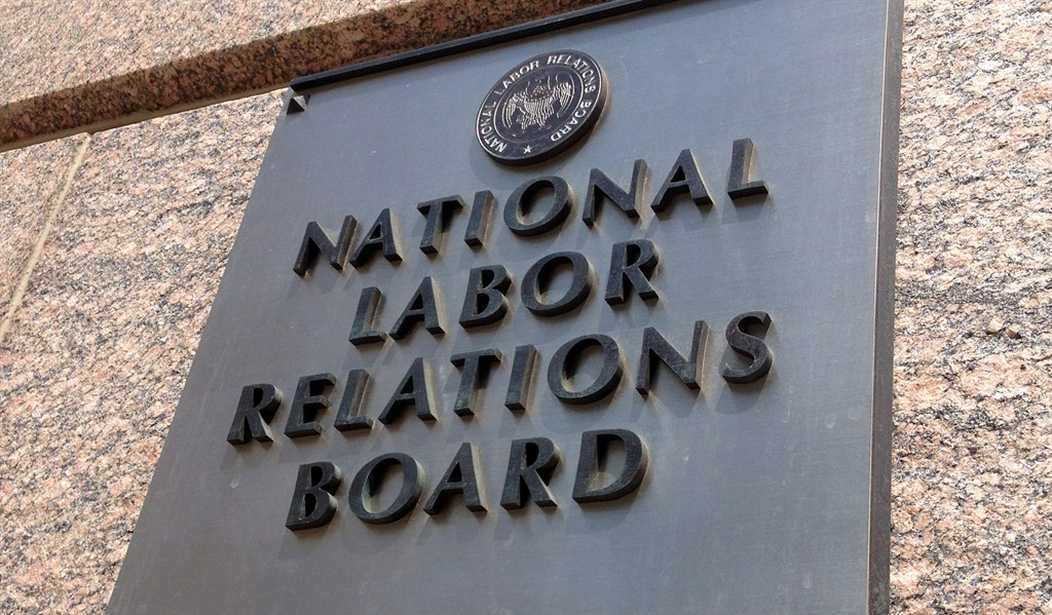As we approach President Trump’s first 100 days in office, and while he’s been busy rolling back regulatory red tape on small business, freeing job creators from excessive government regulation and rescuing workers from the control of Big Labor, there’s one important thing he has yet to do – and that’s fill two critical vacancies on the National Labor Relations Board (NLRB).
This is important. The NLRB is tasked with making big decisions on labor laws, affecting businesses large and small from coast to coast. The Board was established by the National Labor Relations Act of 1935 and was intended to be the unbiased arbiter of labor disputes. Through the supervision of labor union elections and the remedying of unfair labor practices, the Board makes precedent-setting legal decisions, however, during the last Administration, the Board went well out of bounds – undermining decades of established labor law and creating confusion and unease among our nation’s employers.
That’s largely due to the fact that the Board was packed with members tied to Big Labor and anti-business interests appointed by President Obama. But two current vacancies on the Board present a real opportunity to reverse course and restore balance – to get the “independent” agency back to working for American workers, not against them.
In the past several years, small businesses have had to face a myriad of drastic changes and shifts in the way they do business – all the while, union bosses have been benefiting, and indeed, profiting, from egregious NLRB decisions. In fact, a recent study conducted by Workplace Policy Institute and the Coalition for a Democratic Workplace deemed the current Board the most activist, partisan board in history – with its upending of over 4,500 years of established labor law, when taken cumulatively.
Recommended
For example, the Board handed down a decision in Specialty Healthcare and Rehabilitation Center of Mobile that recategorized the workplace by allowing sub-units of employees to unionize, fundamentally changing the traditional bargaining unit standard that union elections operated under for decades. Under the “micro-union” decision, labor can group workers together in ad hoc ways in order to cherry pick employees predisposed to be more favorable to unionization, before calling for an election. NLRB board member Brian Hayes, in his dissent in the decision, accurately predicted that organized labor would use this ruling to increase rates of unionization in places where they would not otherwise have been successful. For example, the United Food & Commercial Workers (UFCW) used the micro-union decision to organize just the cosmetic and fragrance associates of a Macy’s in Saugus, Massachusetts, after previous attempts to unionize the store as a whole had failed.
Then in 2015, the Board made a decision to speed up the union election process, eliminating the prior 25-day minimum period that allowed employers to hire outside counsel and prepare. Today, elections are springing up and taking place in as few as nine days – orchestrated by a well-organized and well-planned campaign by labor bosses. They’re referred to as “ambush election” for a reason.
And the new Joint Employer Standard is yet another decision of late that’s crippling small business growth and stifling entrepreneurialism in America today. In fact, a bipartisan group of 57 lawmakers just signed a letter urging repeal of this new disastrous standard that impacts franchisers and franchisees across the nation.
It’s certainly been a rough few years.
That’s why we greatly applaud President Trump’s signing of more than one dozen bills and counting that repeal onerous Obama-era regulations though use of the Congressional Review Act – and are thankful that he has made the focus on deregulation the cornerstone of his presidency. However, there are two simple things he can do today to make a huge impact and restore sanity to our labor laws: he must act to fill these vacancies by appointing two new, pro-worker board members to the NLRB. As long as those seats sit empty, the deck remains stacked against employees and employers, and in favor of labor bosses seeing to pad their bottom line with increased dues from forced unionization.



















Join the conversation as a VIP Member